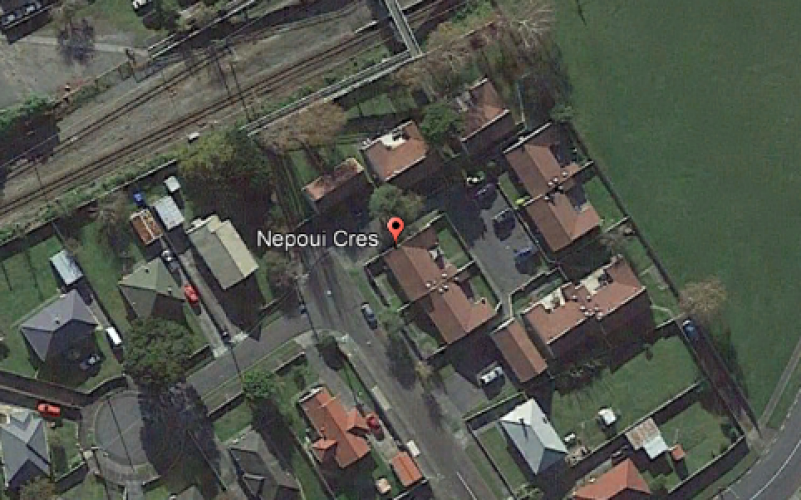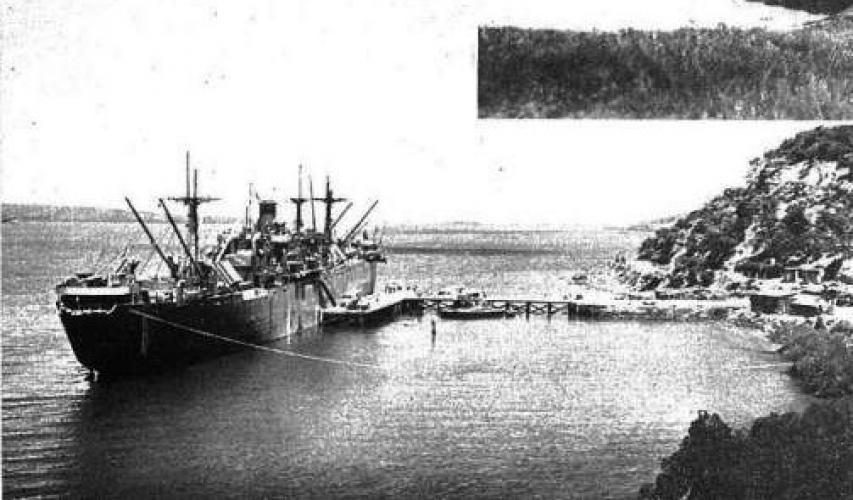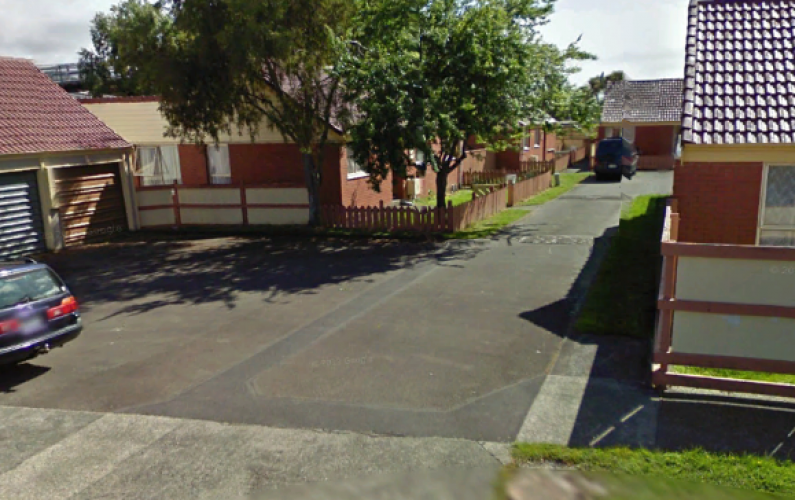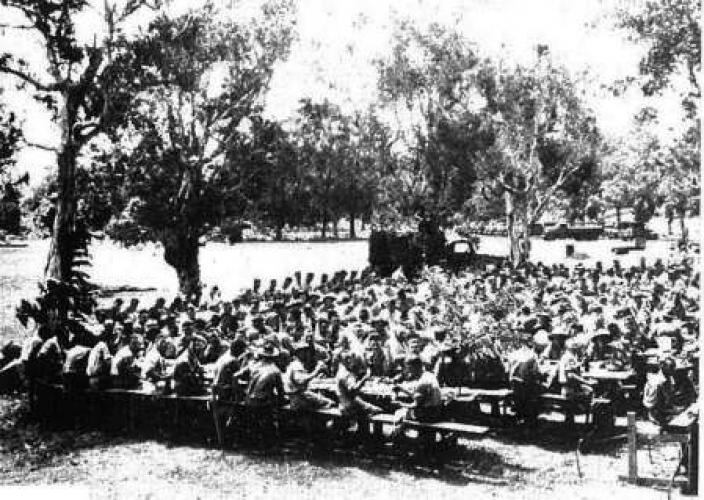206 Nepoui Cres Silverstream Upper Hutt, street scene 2018
Reason for the name
Nepoui Crescent was named after Nepoui a port in New Caledonia. During World War Two the New Zealand Army Service Corps units moved in 1942 to New Caledonia. Ships docked in Port Nepoui. The ASC left New Caledonia in 1943.
In June 1960 advice was received from the Trentham Camp Commander that there would be three new streets one was “Nepoui Crescent”. Many streets in the vicinity of Trentham Camp are named with a military theme in honour of various overseas service. an interesting aspect of this street is that there is no street sign. It has a google registration and a post code but no sign has been erected.
Author: The Poppy Places Trust
There was considerable curiosity among the troops at the end of 1942 when it transpired that the division's new destination was New Caledonia. This large island, a cigar-shaped mountain chain about 250 miles long and 30 miles wide, lying about 1,000 miles north-west of New Zealand's northern tip, was very little known to them, largely because it is a French colony and is connected commercially with Sydney rather than with New Zealand. Captain Cook discovered the island in 1774, and during last century, after the French had taken possession in 1853, the colony achieved notoriety as a penal settlement to which large numbers were transported from France. Since those days it has not progressed greatly, and is at present sparsely settled by a population of 30,000 Kanakas (Melanesian natives), 17,000 French and 7,000 Javanese or Tonkinese. The 'Javoes' were imported originally as indentured labourers to work in the nickel and chrome mines which are the island's chief wealth.
New Caledonia had declared for General de Gaulle in 1940, after a revolution in miniature and the expulsion of those officials who preferred the Vichy regime. Before the Pacific war broke out, Japanese firms had extensive mining interests in the island, which was later included in the co-prosperity sphere of enemy propaganda, so that there was good reason for the deportation of the 1,000 Japanese residents in 1942, From April of that year large American forces were stationed in New Caledonia, and Nouméa, the capital, became the base for the South Pacific command. By the end of the year, when full scale operations were under way in the Solomon Islands 1,000 miles further north, Nouméa's fine harbour was congested with warships of all sizes, including aircraft carriers and, because of in-adequate port facilities, liberty ships were sometimes standing in the streams for months, inside a submarine boom, while they waited their turn at the docks.
The CRASC was one of the senior staff officers who arrived in New Caledonia by air on 7 November, 1942. The first flight of troops from the division arrived at Nouméa four days later, and from it the 1st Field Bakery separated to continue almost immediately to the New Hebrides. Other ASC men in that flight were the small advanced parties from the composite companies, and base supply depot personnel. The latter began to establish ration dumps—No. 1 at Plaine de Limousin, near Nouméa, and No. 2 far up the western side of the island, at Népoui flats and Néméara. In a reference to the way in which those first small parties of New Zealanders were outnumbered by the Americans who then swarmed round the capital, Base Supply Depot No. 1 was always given the credit later among the ASC units for 'taking the beach-head at Nouméa'. The 16th Composite Company made up the first large body of ASC troops to arrive, when it disembarked from the Brastagi at Népoui on 1 December.
If any of the New Zealanders had expected to see tropical shores fringed with palms, their first sight of New Caledonia was sufficient to dispel the illusion. From the Brastagi the island seemed an end-less barrier of wild, bare mountains, which the ship approached for several miles through sand bars and patches of bright green water covering submerged coral, after it had negotiated a narrow passage in the surf breaking on the outer reef. The enthusiasm of those lining the rail slackened as evening fell and the ship edged towards a small T-shaped wharf on the shore of a small inlet concealed in the lower-lying coast. There was not a building to be seen, merely a clay road leading down to the dock, cut into an arid hillside covered with dusty, green scrub. Those troops were the first to land at the port of Népoui, where the wharf had just been completed by US engineers. As they berthed the Brastagi the Dutch master and French pilot had much advice from American truck drivers below on the wharf and from the New Zealand passengers, while members of the advanced parties who had come down to meet the ship called out in lugubrious tones from hiding places in the scrub: You'll be sorry. In darkness the ASC personnel were transported furiously by the Americans to a staging area on Népoui flats, where a camp had already been set up by advanced elements.
At first the division held the northern half of the island down as far as a point a little south of Bourail, and the fact that ships could unload at the new port much of the supplies and equipment required by the force meant that the facilities at Nouméa were relieved to some extent, and a transport haul of 165 miles up the island avoided. In a celebrated phrase some of the men of the 16th Composite Company had been promised that thenceforth they would get 'nothing but hard yacker', and the truth of that prophecy became grimly apparent in the feverish ASC activity of those early days at Népoui.
The bulk of the men had never before had to get along out in the wilds with the minimum of amenities—in that desolate area there were no civil facilities which could be taken over, as there had been to some extent in Fiji. Long hours were worked, and in the beginning frequent practice air raid warnings and stand tos added to difficulties. While its personnel worked in continuous shifts to unload the Brastagi and the ships which followed, many tasks outside the normal scope of ASC duties were tackled by the company—for instance, hatch men and winchmen were provided to work the dock in conjunction with the engineers. The 16th MT Company and the 20th Field Company NZE, both 14th Brigade units, shared the work at Népoui. The two companies had arrived in New Caledonia together, and indeed continued to have close and happy associations throughout their service overseas.








